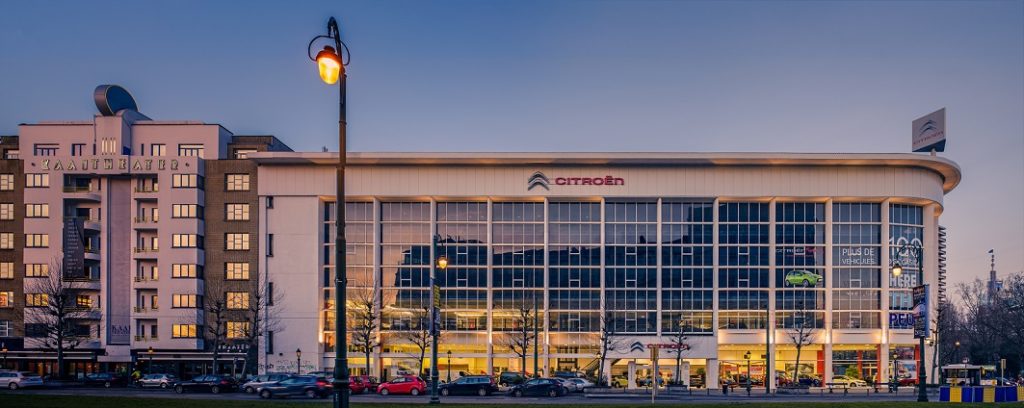Brussels is famous for its many Art Nouveau buildings put up between 1893 and 1914 when architects such as Victor Horta and Paul Hankar designed astonishing private houses for wealthy clients unlike anything seen before. While this remains the general architectural strength and characteristic of the city, Brussels’ important diplomatic role has also given rise to the highest concentration of office space relative to inhabitants in the world. However, there are many interesting urban projects currently taking place in other fields too. The most recent pedestrianisation in the city centre is perhaps the most visible and ambitious urban change for newcomers and locals. Below is a list of other noteworthy construction projects in the city.
No. 1 Citroen Building
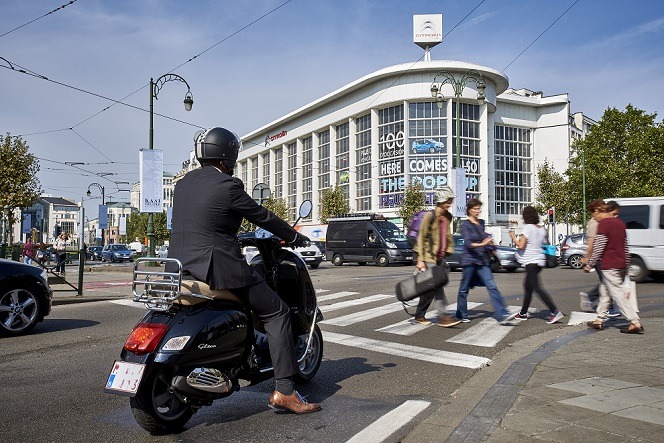
Credit: SAU - MSI Brussels
This is generally recognised as being one of the outstanding buildings of Brussels and the subject of a very ambitious cultural project. Brussels-Capital Region has plans to refurbish the building to create the largest museum in Brussels since the beginning of the 20th century.
The goal? To transform this former garage into a cultural centre of global stature. The Citroën Cultural Centre represents a new ambition for every inhabitant of Brussels.
Brussels is rich in terms of modern and contemporary art, architecture and culture. But one missing piece in the jigsaw is a museum of modern and contemporary art and architecture.
The aim with this project is to give all Brussels inhabitants a cultural venue that is accessible and educational. In addition to the areas dedicated to cultural exhibitions, multipurpose leisure and education spaces are also part of the plans.
Société d'Aménagement Urbain/Urban Development Corporation (SAU-MSI) acquired the premises of the Citroën-Yser garage in 2015 with a view to developing a cultural centre of international stature. The iconic 48,000 m² building was constructed in 1933 on a plot of nearly two hectares, alongside Brussels canal.
The garage itself will remain operational while Citroën constructs a new building, scheduled for opening later this year.
As well as hosting contemporary art, the museum will house the International Centre for Urbanism, Architecture and Landscape.
Located near Place Sainctelette, the Citroën-Yser garage was built to plans drawn up by André Citroën himself, who wanted it to be Europe’s largest garage. A Brussels-Capital Region spokesman said, “Given its location and iconic character, this is a strategic site for the implementation of the canal plan.”
No. 2 Ecoduct
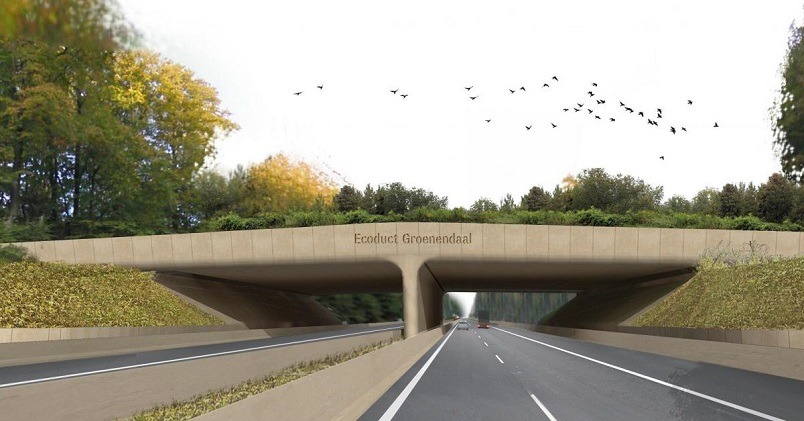
Brussels will soon host a new bridge – not for traffic or pedestrians, but wildlife.
From August, when the first phase of work of the bridge at Groenendaal is scheduled to be finished, the animals of the Forest Soignes will be able to cross the Brussels Ring in safety.
The “ecoduct”, 60m wide and 55m long, will cost about €6 million and is designed to improve safety for both humans and animals. As well as trees and plants, it will also include a chain of small pools for amphibians. An ecoduct is a wildlife crossing in the form of a viaduct in which the upper layer is reserved to let animals cross a road safely.
Every year, thousands of animals die on the Ring and research suggests that many animals prefer this location to cross. These include badgers, stone-martens, squirrels, deer, boars, forest polecats and foxes.
The scheme is being financed by several bodies, including the Flemish government, European Union, two local municipalities, the Nature and Forest Agency and the Road and Traffic Agency.
Ben Weyts, minister responsible for mobility and animal welfare, said, “This is not only about animal welfare but also traffic safety.”
No. 3 Hippodrome
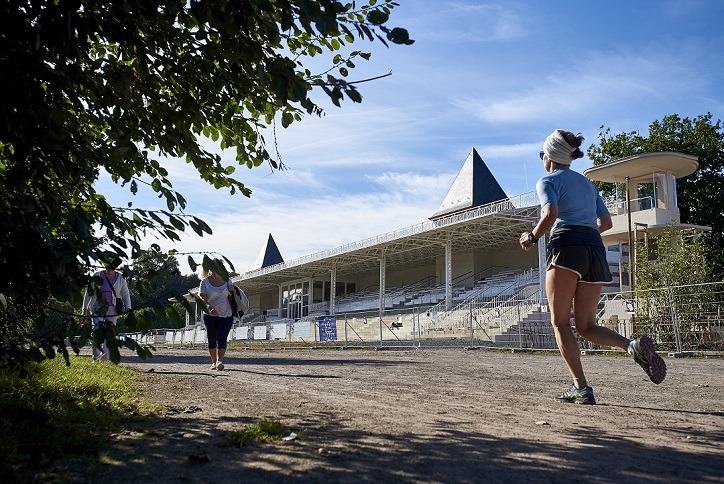
Credit: SAU - MSI Brussels
Four iconic buildings have opened at the city’s famous Uccle-Boitsfort Hippodrome. This follows exterior restoration work overseen and financed by the Urban Development Corporation.
Re-opened last September, the four listed buildings - the grandstand, small stand, weighing building and judges’ tower – go some way to restoring the site’s former glory.
The site, restored at a cost of some €6m, also now includes a new-generation amusement park. Located at the edge of the Forest de Soignes, at the busy intersection of Avenue Roosevelt and Chaussée de la Hulpe, the 32,5 hectare hippodrome is a gateway to the forest.
Brussels-Capital Region, which worked in collaboration with the Directorate of Monuments and Sites, had three main goals: to preserve the site’s natural and historic heritage, develop a recreational green space for families and to develop the site’s recreational, educational and cultural functions. One further goal was to make the links between the three buildings clearer.
The origins of the Boitsfort Hippodrome date back to 1875, when plans for a race course were drawn up by landscape architect Edouard Keilig. Built in 1878 in a picturesque eclectic style, the grandstand and small stand are of interest from architectural, technical and historical viewpoints.
A Brussels-Capital Region spokesman said, “Its ambitions are to promote nature and biodiversity in the city, bring families together, create a strong link with the forest and become a flagship destination for tourism, culture and education.
Rudi Vervoort, Minister-President of the Brussels-Capital Region, agrees, saying the aim is to “welcome families, restore key, historic buildings and preserve the environment.”
No. 4 COOP
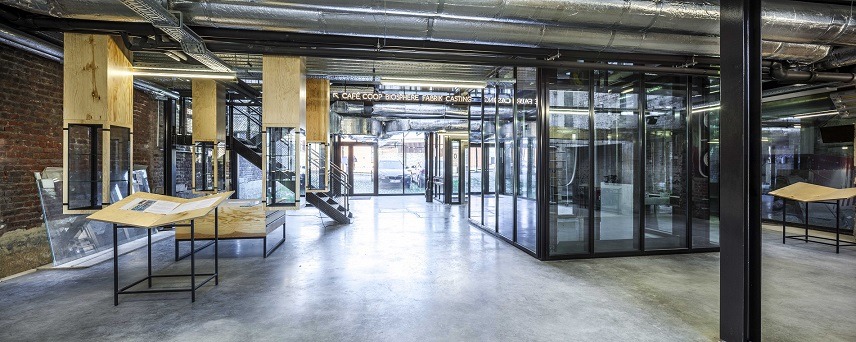
Credit: Marc Detiffe
COOP, the former Moulart industrial mill at Quai Demets in Anderlecht, has been totally restored and converted into a business and cultural centre as part of the Port Sud project. It includes a permanent exhibition which looks at different aspects of the history of the local canal, its people and environment.
But the project, which was completed last year and is the product of a partnership between public and private actors, is designed to ensure the future of the site – and local area – is guaranteed. Nearly €8m was invested in the renovation by Brussels Region and the EU and it now offers a unique blend of functions.
These include premises offering support to 20 SMEs in more than 3,000 square metres of work space and offices. A “waterway innovation yard”, meanwhile, is dedicated to boat building and renovation.
The top floor of the building is now home to an impressive auditorium which seats up to 70 people. Partnerships are now being forged with local schools, neigbourhood associations and cultural groups.
No. 5 Greenbizz
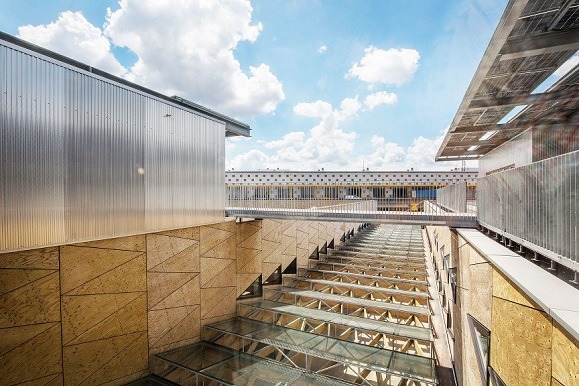
Situated in the Brussels’ canal area, this is the first incubator-SME-park dedicated to sustainable economy in the Brussels-Capital Region. Set up in an all-new building with innovative and exemplary architecture, it comprises 5,505 m² of low-energy production workshops for SMEs and 2,815 m² of passive incubation spaces.
Greenbizz is the economic part of the vast mixed-use Tivoli Green City Project, a new neighbourhood blazing trails in sustainable development and social and functional mix in an urban environment
Cynthia Troch, of citydev.brussels, said, “The biggest challenge was to reconcile top-notch energy performance with the particularly stringent fire protection regulations applicable to an industrial building. The engineering firms' remarkable research made it possible to design a building which is exemplary for both these aspects.”
Greenbizz aims to boost the sustainable business sectors in Brussels, support sustainable business projects and promote employment in these sectors. It also helps young businesses and start-ups from the sustainable business sectors to develop. The project has just received a Publica Award and has been nominated for other awards (MIPIM Awards 2017, Guanghzou Award 2016).
Greenbizz demonstrates beautifully that it is eminently possible to house in an urban environment, specifically in a sustainable mixed-use neighbourhood, SMEs and project initiators in a work environment where stand-out architecture is combined with technological excellence.
By Martin Banks

